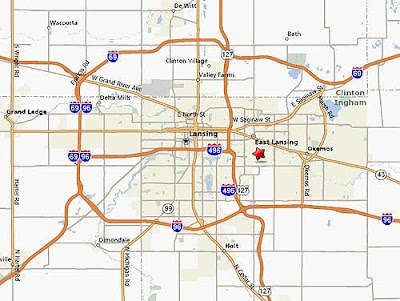For my Public History class we are working on creating a museum exhibit for the temporary exhibit space at the Michigan Historical Center dealing with I-496.
The class was divided into two teams, one that mainly focuses on the research needed for the exhibit and finding all of the artifacts necessary for it, and the writing team that is actually working on creating the exhibit story line, design, and proposal for the exhibits actual implementation. I am on the writing team, and we currently have a working story line of the exhibit:
- Introduction: Interstate Highway System
- Process: Decision Making
- How, why, and where
- Real estate segregation and its impact
- Impact Zone
- Path of least resistance
- Controversy
- What was there
- Transition of Before and After
- Construction of the Highway
- Consequences
- Paying the Price: Construction and Relocation
- What was lost
- Progress section (Shows pro and Con)
- Integration
- Economic impact
- GM
- Conclusion: Memories
We are constantly going back and forth with the research team in order for us to incorporate what they have found into the exhibit and to tell them what additional information or artifacts we need. We are currently in the process of determining what types of artifacts we want for each portion of the exhibit and creating a floor plan of the exhibit based on the empty template that we have of the temporary gallery floor. We are hoping to make the exhibit in a clover-leaf pattern to imitate the clover-leaf pattern of I-496, as well as have road signs to help guide visitors through the exhibit.
One of our current struggles is finding three dimensional artifacts. Currently, many of our ideas for artifacts are maps, photographs, newspaper clippings, drawings, and graphs. What we really need to do is figure out how to incorporate a large number of physical and interactive artifacts, as least two or three in each part of the exhibit, without putting in things that detract from the main messages of the exhibit. The vast majority of the Michigan Historical Museum's visitors are 3rd and 4th graders, so there have to be lots of different things to catch their interest.
Another current challenge is a website called Omeka, where we are supposed to put digital copies of all of our documents. None of us is very familiar with how to create a digital exhibit through Omeka, and we have been rather disappointed with its capabilities for having a creative and interactive presentation of the exhibit online. We are still working on this.
So, needless to say that we have a long way to go before finishing our portion of this project and since class ends the end of April, not much time to do it in. Hopefully the next few weeks go smoothly and we have something wonderful to present at the end.





























